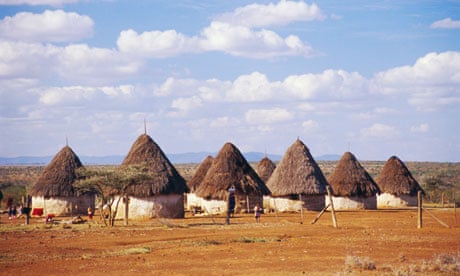When a mining, oil or forestry company comes into conflict with local communities, the bills can soon mount up. A 2011 survey suggests that a major mining project might lose $20m a week if conflict delays production. The loss was even bigger for the Newmont Mining Corporation, which sacrificed $2.23bn in gold reserves when it was forced to close the Minera Yanacocha Gold Mine Project in Peru after major tensions with local people.
Even minor complaints can escalate into disputes or violent conflict if left unattended. This is potentially devastating for local communities. For companies, it can waste time and money, damage reputations, and threaten future investment opportunities. That's why extractive industry companies are starting to see the business case for setting up their own formal grievance mechanisms to help prevent conflict with local citizens and mediate conflict when it does occur.
Companies often set up such mechanisms to comply with the standards of international financial institutions and certification initiatives. The International Finance Corporation requires companies it funds to establish grievance mechanisms with affected communities. The Forest Stewardship Council requires the same of companies it certifies. A major recent influence on awareness is Professor John Ruggie, the former UN Special Representative on Business and Human Rights. Ruggie's 'Protect, Respect and Remedy' framework identifies the need for governments to protect human rights, for business to respect those rights, and for adequate forms of remedy, such as company-community grievance mechanisms.
The mining company, TVIRD, in the Philippines and forestry company, Congolaise Industrielle des Bois, in the Congo Basin have implemented grievance mechanisms based on existing community structures and respect for traditional conflict resolution approaches. TVIRD's approach helped to mitigate a legacy of conflict left by a previous project operator.
In the oil and gas sector, efforts beyond the formal grievance mechanism have served to build dialogue and resolve issues. The Sakhalin-2 project in the Russian Far East built a dialogue with local indigenous peoples through face-to-face discussion of impacts and mitigation measures, and a comprehensive benefit-sharing plan. This helped to reduce conflict with the indigenous peoples that arose in the earlier stages of the project. BP in Azerbaijan supported civil society capacity building which enabled informed dialogue between the company and civil society in relation to construction of the 1,768km Baku–Tbilisi–Ceyhan pipeline.
Grievance mechanisms are stronger if they maintain close and regular contact with communities.
Much depends on the experience and work ethic of community relations staff, who can discuss problems with local residents and often resolve issues on the spot. Local people need to have a sense of ownership over the grievance mechanism. In some cases local institutions may carry more legitimacy than a formal company grievance mechanism and can be used instead. Companies can also increase their legitimacy by allowing third-party monitoring of the mechanism and complaints received, and by publicising the results.
But for grievance mechanisms to really work governments, companies and communities all need better skills and knowledge. Communities need to understand more about company projects so they can engage in more constructive dialogue with the company. Government need greater capacities to regulate, to recognise local claims, and to mediate conflicts. A challenge is the need to maintain a clear distinction between government and company responsibilities in resolving grievances, and communicating this to stakeholders. Company staff often need training to respond effectively to, and learn from, grievances that can ultimately improve business performance.
David Vermijs, an independent advisor on business and human rights and a contributor to a new book by the International Institute for Environment and Development (IIED) on this topic says: "A grievance mechanism is not just a mechanical process or a tool, but requires a change in corporate culture: a fundamental shift in how the company deals with conflict and stakeholder engagement."
A big question is how national companies, junior companies and contractors can adopt good practice.
Multinationals often operate as joint ventures with national companies, and decisions on whether to implement a grievance mechanism, or how much money to spend on it, may need to be negotiated with that partner. Junior companies or contractors may not have large teams of experts, so may consider complex grievance procedures a low priority. But with emerging evidence of a strong business case for addressing conflict, any companies with that viewpoint could find it to be a costly one.
There is no 'one-size-fits-all' approach to implementing a company–community grievance mechanism effectively. A sensitivity to the underlying importance of respecting community views and acting on their concerns is a good start. There is increasing evidence to convince companies of all sizes that good community relations are a fundamental part of doing business, and the upfront investment will invariably save money further down the line.
Emma Wilson is a senior researcher at the International Institute for Environment and Development and co-author of Dispute or Dialogue? Community perspectives on company-led grievance mechanisms.
This content is brought to you by Guardian Professional. Become a GSB member to get more stories like this direct to your inbox

Comments (…)
Sign in or create your Guardian account to join the discussion